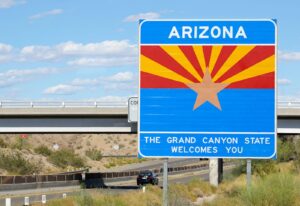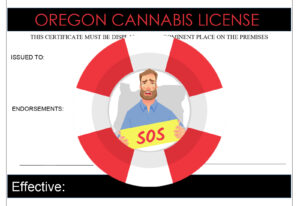Inflation has been dominating the headlines lately. Prices for gasoline, food (e.g., beef, bacon, eggs), used cars and many other items have spiked over the past year. It seems like there is always breaking news of the latest shortages – baby formula, tampons, eggs, semiconductors, sriracha, lumber, bicycles, etc. Cannabis, however, has seemingly been immune to inflation as prices have actually declined in many states over the past year.
Many factors are causing inflation generally, even if the phenomenon is simply described as “too much money chasing too few goods.” And although many of these factors still have an impact on the cannabis industry, the unique supply and demand conditions of the cannabis market have prevented cannabis price increases and product shortages.
Cannabis is defined by state — and not national or international — market conditions
Cannabis is still illegal at the federal level. Cannabis cannot legally cross state borders even though two contiguous states may have legalized cannabis for medical or recreational use. The cannabis market is defined by how much cannabis can be cultivated, produced and sold in each state.
In many states like California, Colorado, Oregon, and Washington, the number of cultivators is far greater than the number of licensed retailers. Despite strong demand, many states currently have an oversupply of licensed cannabis grown in-state that can only be sold in-state. When supply exceeds demands, the market prices of a product will be lowered by some companies just to remain competitive.
COVID-19 factor
With movie theaters and restaurants closed during the pandemic, many turned to cannabis to cope with social distancing stress. Although the COVID lockdowns stopped in-store sales for a while, online sales with curbside pickup and delivery options facilitated strong sales at the early stages of the pandemic.
The recent easing of COVID restrictions and rebounding consumer demand for restaurants, movies and other entertainment has caused demand for cannabis to decline. Also, with inflation driving prices for essentials like food, rent, gasoline higher, consumers have less discretionary spending money available for cannabis.
Supply chain disruptions
Inflation has been driven by delays and increased cost for shipping containers, rail freight and trucking. International events such as Russia’s invasion of Ukraine and China’s zero-COVID policies have also fueled inflation surges. But these logistical and international factors have not impacted cannabis as much as other products because cannabis supply is limited to those in state. Sure, there are higher gasoline and freight charges for intra-state transport, but it doesn’t hurt as much as higher national or international transport charges.
Cannabis cultivators had to deal with more supply chain issues as certain fertilizers became unavailable or much more expensive because of the Ukraine war. Grow lights, pots and other growing equipment were hit with increased costs from Trump tariffs on Chinese imports and delays in delivery caused by the backlog at U.S. ports. Although growers felt the brunt of these increased costs, they were not able to pass on these higher costs to processors, distributors and retailers as they risked being replaced by another growing who was willing to eat those costs and offer a lower price.
Availability of black market unlicensed cannabis
The cannabis market is unique in having a significant available supply of illegal, unlicensed cannabis. Legalization of cannabis by states should cause the illegal market for cannabis to fade to obscurity. But currently, retail prices for cannabis from licensed dispensaries are usually substantially higher than that sold on the black market.
A key difference between legal and illegal cannabis lies in taxes that some states imposed not only on transactions from retailers to consumers, but also on transactions from cultivators to retailers. These taxes create a price differential that makes illegal cannabis an attractive option as unlicensed sellers offer product that is just as good (if not better) and lower priced than legal cannabis. The availability of high quality, lower priced illegal cannabis competes with legal cannabis, particularly with inflation pushing some consumers to pivot back to less expensive unlicensed product.
The cannabis industry is facing a cost-price squeeze. As noted above, inflation continues to increase the cost of cultivating cannabis. But given the excess supply available in most states, those costs cannot be passed through higher prices to the customers. Retailers dare not risk increasing prices to consumers for fear of losing sales to their competitors who may not raise their prices.
With cannabis demand softening as COVID restrictions ease, this cost-price squeeze likely will be felt most by cannabis cultivators, and some will not be able to survive this market phase. Inflation may not be reflected in higher cannabis prices, but inflation is most certainly having an impact on the cannabis industry, with some growers feeling the pain more than retailers.
























